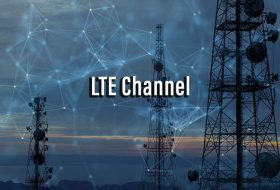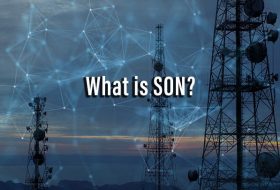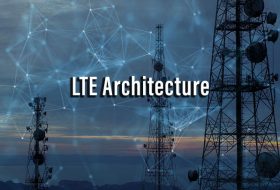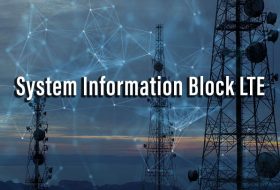Optimization Feature TTI Bundling
- TTI bundling is specified in 3GPP (TS 36.213, 36.321) to allow the improved uplink performance for cell border UEs (which often hit the maximum transmission power) and for reduced PDCCH load.
- TTI bundling allows for transmitting the same transport block in 4 consecutive UL subframes (also known as bundle size), which leads to increased energy per transmitted bit and therefore improved uplink link budget.
Let's understand the basics of L2 Segmentation
- Power control, Adaptive Modulating and Coding rate (AMC) and HARQ are the three main link adaptation methods used in the LTE system.
- However, power-limited mobile terminals at cell border can not increase its transmission power and moreover, those users can not increase transmission times with the specified packet delay budget at air interface by current HARQ configuration in LTE uplink.
- This AMC is the best way to fulfill the QoS requirements.
- However, when performing AMC, the transmission block size can not be too large so that the payload size in the transmission block has to be reduced in order to maintain power density.
- When the required payload size is smaller than a single VoIP packet, the segmentation at the RLC layer has to be carried out and the normal packet will be divided into several sub-packets. Then these sub-packets will be sent separately in different HARQ processes.
TTI Bundling Concepts
- TTI bundling uses automatic retransmissions in several consecutive uplink TTIs without waiting for HARQ feedback to form a longer effective TTI length.
- An alternative approach to pure HARQ retransmissions or RLC segmentation is a method named TTI Bundling.
- Instead of segmenting the RLC SDU into smaller units at the RLC layer, in this approach, several redundancy versions (RVs) corresponding to the entire RLC SDU are transmitted in consecutive TTIs.
- Only when the last redundancy version of the transport block is received by the eNB, the HARQ feedback is sent
- Thus it increases the amount of accumulated energy within a defined packet delay budget for a single VoIP packet.
- The consecutive uplink TTIs is so-called a bundle while the number of consecutive uplink TTIs is the bundled size.
- The same MCS and frequency bandwidth will be utilized among subframes in a bundle, and only one uplink grant and one HARQ feedback channel is transmitted for a bundle.
HARQ Retransmissions
- HARQ is an error correction mechanism and applied at the LTE Medium Access Control (MAC) layer.
- The idea is that each user has multiple parallel stop-and-wait processes: When waiting for an ACK/NACK feedback of one process, other transport blocks are sent using other processes.
- By this approach, the throughput of the link is maximized.
- In addition, only a single bit HARQ feedback signal is needed instead of feedback messages containing sequence numbers as in the case of a window-based protocol.
The number of parallel HARQ processes depends on the HARQ RTT. - Taking transmission, reception, and processing delays into account, it can be calculated that the retransmission of the transport block is possible 8 ms after the previous transmission.
- Thus, the number of parallel HARQ processes is also set to 8 in LTE.
- In the uplink direction of LTE, synchronous HARQ is used, meaning that if there is a retransmission of the transport block, it occurs exactly 8 ms after the previous transmission.
- In the above diagram, the standard, the bundle size has been fixed to 4 transmissions.
- That means, 4 redundancy versions of the transport block resulting from a single RLC SDU are transmitted in consecutive TTIs with HARQ process number 0.
After all 4 transmissions have been received and decoded by the eNB, the HARQ feedback is sent. - Assuming 1 ms delay for transmission and 3 ms delay for decoding and processing, this feedback is possible in TTI # 7.
- After the UE has received the feedback, assuming again 3 ms for processing, the earliest retransmission by the UE is possible in TTI # 11.
- Thus, the shortest HARQ RTT with the bundle size of 4 would thus be 11 ms.
However, the HARQ RTT of 11 ms cannot be synchronized with the 8 ms normal LTE HARQ RTT, because retransmissions of the normal processes and the bundled processes using the same physical resource blocks would collide when non-adaptive retransmissions are applied. For that reason, in 3GPP it has been agreed that the retransmission of the bundle is delayed until the 16th TTI. - The time slots in between can be used for some other bundled HARQ processes from the given UE or other UEs using TTI bundling.
The drawback of TTI Bundling
- Increase in drop rate.
- If a UE is configured for TTI Bundling and the UE is using an MBB service as well as a VoIP service, then the MBB service has limited throughput.
- The enhancement decreases VoLTE call drop rate when UE is in poor RF coverage area and in case the RRC reconfiguration response message is missing.
For those unfamiliar with VoLTE Architecture, you can explore it in more detail by following this link: VoLTE Architecture
You Might Also Like

04
Aug

31
May





